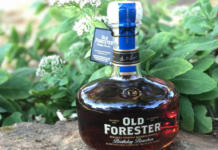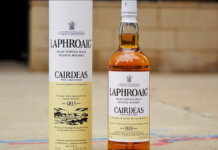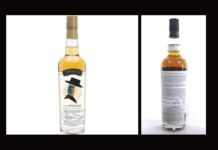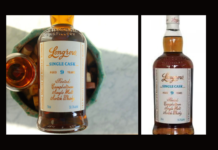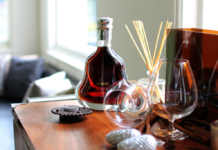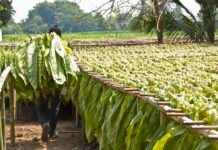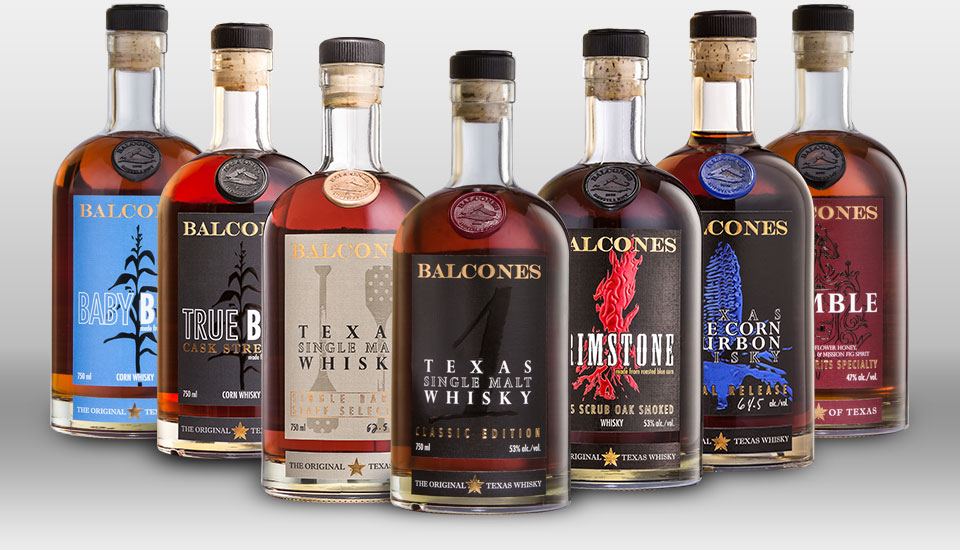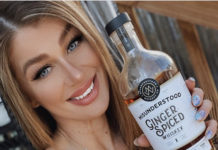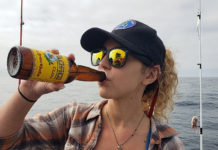Nine years ago, Balcones was little more than an idea fueled by a ruthless drive to create something new, something genuine, something worthwhile – a Texas whisky tradition. It all started with an old welding shop under a bridge. We hammered and welded our own stills, and sawed and nailed on that little shack to build the distillery that we use to this day. Since then, we have released ten unique whiskies and spirits, of which we are very proud, and won over 140 national and international awards from the world’s top judges and critics. We don’t just make whisky in Texas. We make Texas whisky. Tastethedram spoke to the Head Distiller Jared Himstedt about their current success within the American Bourbon industry.
 Jared, Can you tell us about yourself. How did you get into the Spirit Distillation industry?
Jared, Can you tell us about yourself. How did you get into the Spirit Distillation industry?
JH: I got into spirits through homebrewing. I received homebrew equipment as a wedding gift from a good friend and was pretty active for about 15 years with that. Eventually, I thought I was going to be brewing at a local pub, but ended up just managing there. In the meantime, I fell in love with Scotch, mostly Islay at first, and also found myself wanting to create something. When the opportunity came to help build Balcones as Production Manager and Distiller, I jumped at the chance.
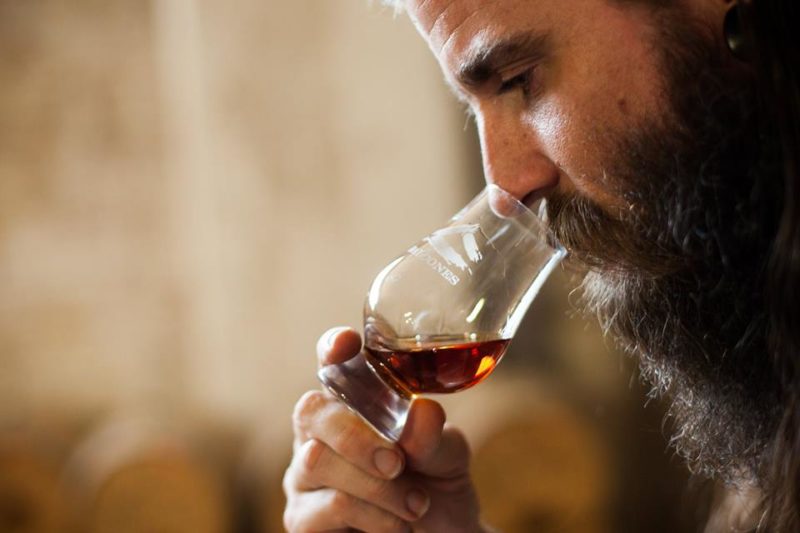 What was the vision for Balcones Distilling?
What was the vision for Balcones Distilling?
JH: We started with some ideas, mostly from scotch traditions and brewing techniques as they related to process, but we began to explore less common raw ingredients out of curiosity. We definitely wanted to be meticulous and as detail oriented as we could. We drank whisky voraciously, trying to make sure and build up as much palate experience as we could before we had anything coming off the stills. Our current goal is simply to make world class spirits. We make spirits we love to drink; even new product development is rooted in curiosity and our desire to explore all the possible facets of the process. We only make things that hold our interest and that we feel proud to stand behind.
What was the most challenging about owning and operating the distillery when you first started?
JH: We built our first distillery as cheap as we could, so we did all the plumbing, built condensers from scratch, did our masonry and insulation for direct fire, and repurposed tanks for fermenters. That was a long process to even get to distilling. Financing was always a problem, as this is a pretty capital intensive venture.
Jared, in your honest opinion, what attributes or skills should a Master Distiller posses to make great whiskey?
JH: A head distiller needs to have a solid understanding of fermentation, a good vocabulary to articulate what you’re smelling and tasting, and I think a curious and focused nature. There is a lot of information out there that relates to the process and almost endless variables to manipulate to pursue specific results. At the end of the day, the buck stops with you, so no matter how many people are involved, you are the final point to make sure everything that goes out the door is top quality and fit to put your name on.
What makes a great dram?
JH: Complexity, depth, subtlety… not so much the individual components, but when the narrative of a dram has interest and cohesiveness. I know I’ve found something beautiful when I’m not over analyzing it; when I have whisky in my glass that is so good that I don’t want to dissect it, just enjoy it.
What whiskey expressions do you currently produce, and how do you stand out in this highly saturated craft whiskey industry?
JH: The majority of our production is dedicated to our blue corn and malt whiskies.
Our blue corn whiskies are:
Baby Blue – our younger, more grain forward expression
True Blue Cask Strength and True Blue 100 – the opposite end of the blue corn spectrum from Baby Blue, in both cask strength and 100 proof variants
Blue Corn Bourbon – the same blue corn spirit, but aged in new casks, and bottled as a Straight Bourbon
Brimstone –
Our Single Malts:
“1” Texas Single Malt – our flagship whisky, made with 100% Golden Promise barley
Staff Selection – annual special release Single Barrel picked by our crew
FR.OAK – a special release matured in French oak
I am not sure the market is saturated yet, at least not in Texas. Texans are fiercely loyal and love supporting Texas businesses. We had good critical success early on and I think people have come to expect a world-class high quality product from us regardless of what we put out. We’ve been very fortunate to have strong support in our home state and home town.
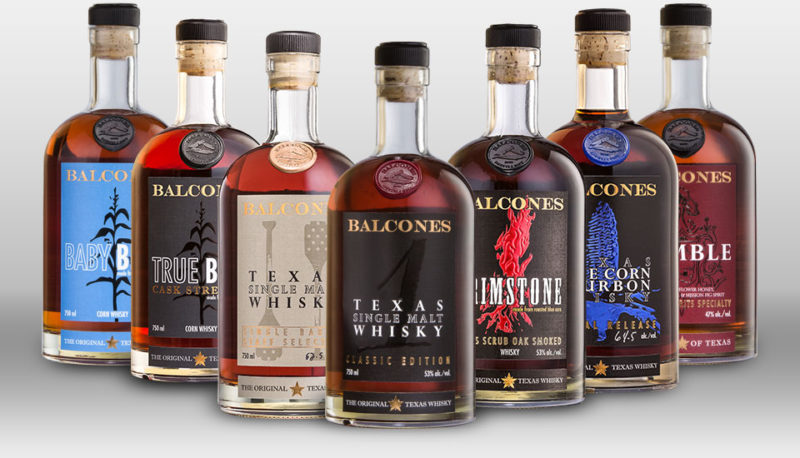 Your whiskey has won a lot of awards, what can you attribute to its continued success?
Your whiskey has won a lot of awards, what can you attribute to its continued success?
JH: In the beginning we were doing well with corn which is still an overlooked category. It wasn’t going to be hard to make a more sophisticated and nuanced corn whisky than the stuff on the market back then. American Single Malt was also such an unexplored area at the time. We have always put a lot of passion and dedication into our products, and I think the continued high quality combined with a healthy portion of innovation has served us well.
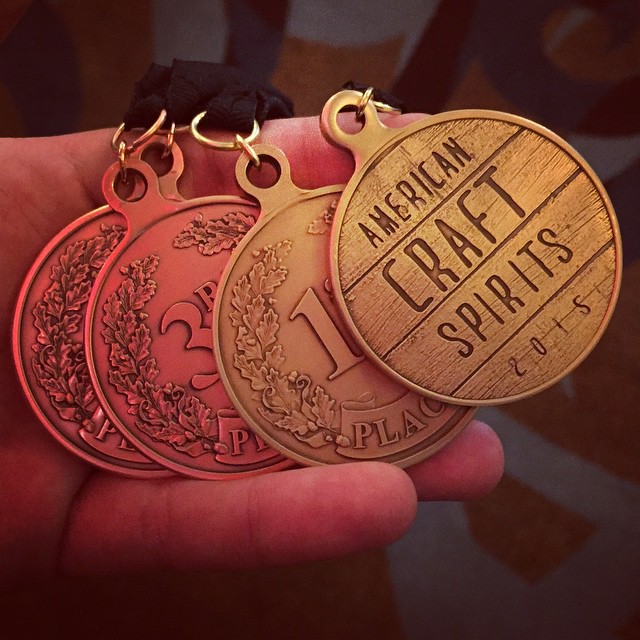 Can you walk us briefly through the distillation process from grain to glass.
Can you walk us briefly through the distillation process from grain to glass.
JH: The first step is milling the grain. It is then going into the cooker or mash tun, depending on whether it’s blue corn or malt. The grain is either cooked or mashed, then sent to the fermenter and yeast is pitched. Our fermentation cycle is a minimum 7 of days, so the next week the finished fermentation is pumped over to our wash still for the first distillation. The next day, low wines from the wash distillation are combined with head and tails from a previous run for the spirit distillation. The new make is barreled, proofed slightly with Hill Country spring water, and tucked away in the warehouse. Depending on the product, the barrels are assessed anywhere from 6-12 months after barreling. We bottle our core range monthly, so we get anywhere from 100-500 individual cask samples out in the blending room and put a blend together, which is then bottled and ends up in your glass.
What are some important things to look out for during the whisky distillation process? How do you ensure that there is a balance to produce consistent high quality product?
JH: There are so many important things to look for. Fermentation parameters are a big deal for managing profile. At the stills, we make pretty conservative cuts. When the new make tastes good off the still you have just cut a ton of time off the maturation process. We still need the barrels to do their work – adding pleasant and oaky flavors and aromas – but we aren’t relying on them to clean up any unwanted aromas or flavors.
We want to produce consistently high quality spirits, but are willing to tolerate a higher amount of inconsistency than a big producer can. We want you to recognize a product bottling to bottling, but if any specific blend is different in subtle ways, we think that’s a good thing. There might be a malt blend that shows more fruit, or spice, or chocolate notes, and when we find those possibilities we get excited to be able to showcase all the different ways our spirits can turn out.
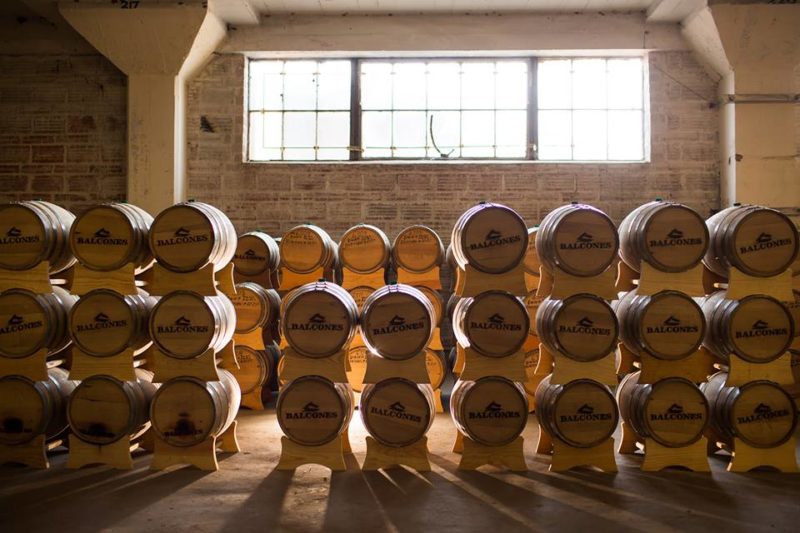 You currently produce many spirits, two of them being Blue Corn Bourbon and Baby Blue Bourbon, can you tell us the difference between the two.
You currently produce many spirits, two of them being Blue Corn Bourbon and Baby Blue Bourbon, can you tell us the difference between the two.
JH: Baby Blue is a corn whisky, not a bourbon. Both expressions are made from the same 100% blue corn mashbill, but Texas Blue Corn Bourbon, like all other bourbons, is aged in new cooperage, and Baby blue is in aged in used barrels. Beyond that, we take separate approaches with each expression. Baby Blue is always intentionally youthful, and champions the grain over the cask, whereas the bourbon is very much intended to be a big, aggressive, woody whisky, at cask strength no less.
Thank you for clarifying that up Jared. So tell us, when you were a young boy did you imagine that one day you would be making and tasting whiskey for a living?
JH: Never would have guessed. I wouldn’t even have imagined it barely a year before we started the distillery. I can honestly say it wasn’t even on my radar. As a kid I was really into art, and figured I’d do something in fine arts, maybe teaching. I got a Studio Ceramics degree along with a Social Work degree in college, but serious pursuit of hobbies is what got me to this point.
Jared, is there a particular flavor profile you are looking for when doing fermentation and the wash?
JH: Sure, depending on what product we’re running. We are always playing with the parameters that yield specific acids and ester precursors to get a little more or less of what we want in a product. We also mess with fermentation temperature and playing with reflux at specific parts of the pot distillation to minimize or enhance aspects of the distillate.
Is there anything special in the pipeline for 2017 we should be looking out for?
JH: We have been working on 100% Rye whisky for awhile, and think that might be ready this year. Over the years we’ve laid down a good bit of lighter and less woody refill profile Single Malt that’s coming together nicely. Peated Golden Promise is on its way too, along with a bunch of special cask-finished versions of our standard expressions.
Describe your whiskey in 3 words
JH: Bold, complex, expressive
Is there anything else you’d like to share with the Tastethedram readers?
JH: Thanks for the chance to share our story and perspective with you. For those readers who enjoy what we make, thank you. We truly love what we do and getting to share that with you is extremely rewarding.





